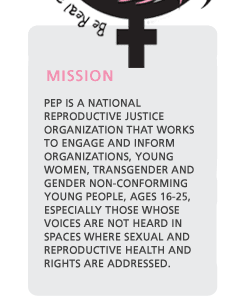The use of new reproductive technologies can pose both benefits and risks to women. While the technologies have enabled millions of people around the world to have genetically-related children, they have the potential to decrease women�s decision-making power, and certain methods have not been sufficiently tested. One practice that has largely gone unquestioned is paying young women to provide �donor eggs� to a woman undergoing in vitro fertilization who cannot conceive using her own eggs. While most women who have provided eggs for this procedure have said they don�t do it only for the money, the majority say they would not have gone through the procedure if they hadn�t been paid. The procedure is invasive, carries some known short-term risk, and the long term health risks are unknown.
Young women are specifically recruited for their eggs because they generally have more and better quality eggs. College campuses are inundated with advertising because they provide easy access to a large pool of highly educated young women with specific �desired characteristics,� such as high SAT scores; athletic, mathematic, or musical ability; and specific ethnicities. Many women in college are also faced with high tuition and/or debt, making them prime targets for paid egg �donation.�
Egg donors are recruited through fertility clinics, egg brokers, or by private solicitation. Desired qualities are often listed in ads, along with rates of compensation, ranging from $5,000 to $100,000 (the more specific the desired qualities, the higher the payment). Egg �donation� (in quotes because since the women are paid, these are not donations) raises reproductive justice concerns about health risks, exploitation, and commodification of young women�s reproductive tissue.
Procedure
Women inject three different hormones over the course of 4-6 weeks to �shut down� their ovaries, then �hyperstimulate� them in order to control the timing of the release of the mature eggs. This is followed by a surgical procedure under light anesthesia, during which an ultrasound-guided needle is inserted through the vaginal wall into the ovary and the eggs are suctioned out. Eggs are then fertilized in a laboratory with sperm, and the resulting viable embryo(s) are implanted into the uterus of the woman intending to become pregnant.
Concerns
Health risks
<!--[if !supportLists]-->�The long term effects of the hormonal drugs are not well studied and researchers have not ruled out a link to reproductive cancers. 20-33% of women taking the hormonal drugs experience mild forms of ovarian hyperstimulation syndrome (OHSS). Severe cases (1%) can lead to hospitalization, renal failure and, though rare, death.<!--[endif]-->
<!--[if !supportLists]-->�The information women are given on the health risks varies. There is no standard ensuring medically accurate information, including information about long term risks. <!--[endif]-->
Financial incentives
<!--[if !supportLists]-->�While fertility clinics generally offer $5,000-8,000 for third party egg donation, private solicitation offering $10,000 or more is not uncommon. Some ads offer as much as $80,000 or $100,000. Offering large sums has created a disturbing commercial market in young women�s reproductive tissue.<!--[endif]-->
Lack of regulation
<!--[if !supportLists]-->�There is no limit on the amount women can be paid for their eggs. The American Society for Reproductive Medicine (ASRM) recommends women not be paid more than $5,000, or $10,000 in rare cases, but it is a voluntary guideline and women are routinely paid more in private agreements. <!--[endif]-->
<!--[if !supportLists]-->�The ASRM recommends that women not undergo more than 6 egg retrieval cycles, but there is no system tracking donors who might sell eggs to different clinics, brokers, or individuals. Multiple cycles also put women at greater risk for ovarian hypsertimulation syndrome and potentially for longer term effects.<!--[endif]-->
Policy is needed in the following areas:
- Investigating alternatives to hormonally-stimulated egg retrieval.
- Developing standards of care for procuring eggs for fertility treatments.
- Collecting data on the health effects of egg retrieval, particularly long-term effects.
- Determining appropriate amounts of compensation.
If you are a young woman considering egg donation, or you�ve already donated your eggs:
<!--[if !supportLists]-->�Ask questions: make sure you are fully informed about the process, health risks, and what is still unknown about long-term effects. Do independent research, and bring your concerns to the doctor who will be performing the procedure. If s/he won�t address your questions, go to another clinic. <!--[endif]-->
<!--[if !supportLists]-->�Call Choice USA or the Center for Genetics and Society to join our campus-based campaign: <!--[endif]-->
<!--[if !supportLists]-->oContribute your questions: join other young women nationally in creating a questionnaire for women to use with physicians and fertility clinics.<!--[endif]-->
<!--[if !supportLists]-->oShare your story: your experiences can shed some light for women who might be considering egg donation.<!--[endif]-->
<!--[if !supportLists]-->oWork with college or university Student Health Centers: help make medically accurate information available to all women about egg retrieval.<!--[endif]-->
Resources
| 





